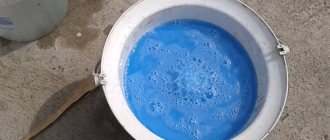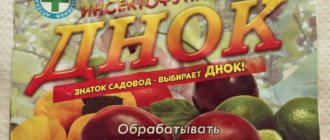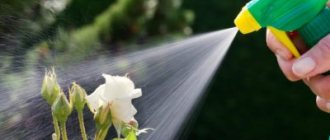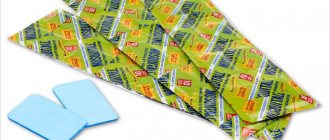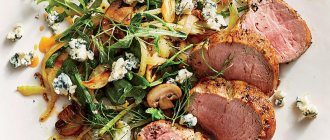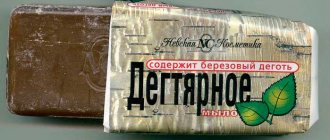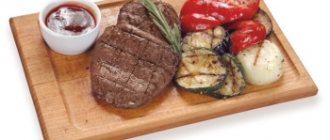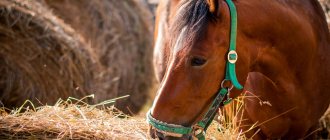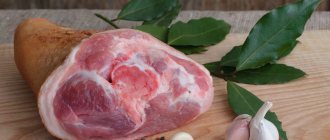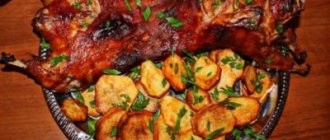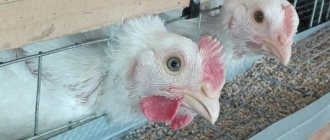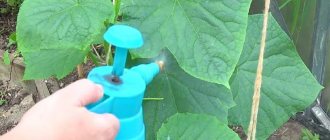Making Bordeaux mixture
Bordeaux mixture is a combination of copper sulfate and so-called milk of lime. The solution is considered to be a comprehensive drug, effectively used in the fight against diseases of garden plants. It copes with any infection of a bacterial or fungal nature equally easily.
On sale you can find rolls of copper sulfate, packaged for the preparation of 1% and 3% mixtures. Their weight is 100 and 300 g, respectively.
How to prepare 1% Bordeaux mixture
Instructions for mixing 1% Bordeaux concentrate:
- Prepare 100 g of copper sulfate and 150 g of fluff.
- Dissolve the main component in 1 liter of water, the temperature of which will not exceed 50°.
- And dilute the additional one in a separate container in 1 liter of cold. If the lime is quicklime, then it should be carefully poured into the water, rather than pouring water into the powder.
- After this, add both compositions with liquid up to 5 liters each.
- Filter the lime slurry through several layers of thick cloth or gauze.
- Add dissolved copper sulfate into it in a thin stream, while mixing thoroughly. The mixture should take on a sky blue color.
- The sequence cannot be violated, because when alkali is poured into an acidic solution, the neutralization reaction can occur very violently, and there is a risk of getting a burn.
Do not use metal containers to mix Bordeaux mixture. Enameled or glass containers are well suited for this purpose.
How to prepare 3% Bordeaux mixture
At home, preparing a 3% concentrate is as easy as preparing a 1% concentrate. For this you will need 300 g of copper sulfate and 400 g of fluff. How to dilute such Bordeaux mixture.
Mixing Process:
- Copper sulfate should be diluted in 1–2 liters of hot water.
- It will take 2–3 liters of cool milk to prepare lime milk.
- Similarly with a less concentrated solution, the substances are dissolved in separate containers and brought to a volume of 5 liters each.
- Next, vitriol is carefully poured into the strained milk of lime and mixed thoroughly.
- Finally, check the pH level. For this purpose, you can use an acidity indicator, which is usually included with copper sulfate. The correct reaction should be neutral or slightly acidic, as indicated by the shade of the indicator. The red paper should turn blue, but the color of the blue paper should remain unchanged. If an aggressive tint appears, then the final product should be diluted with some milk of lime and the test repeated.
- If you don’t have a litmus strip, you can check the acidity with an ordinary nail by immersing it in the solution for 10 minutes. The appearance of a blue coating signals the danger of the mixture.
Bordeaux mixture cannot be stored for long periods of time. Therefore, it should be used immediately after mixing. It is prohibited to dilute the prepared mixture with water.
Safety precautions for use
Since Bordeaux solution is a toxic substance, you need to use protective equipment when working with it:
- closed work clothes;
- medical respirator;
- latex gloves;
- work glasses;
- oilcloth apron.
Children and pets should not be present in the area during treatment. Items that can react chemically with the fungicide should be removed.
You should not use Bordeaux mixture during drought and heat, as well as on a rainy day or with heavy dew. In the first case, the drug will burn the plants, in the second its effectiveness will decrease. The optimal time for the event is morning or evening at moderate temperature and humidity levels.
After treatment, you should not go out into your garden plot for at least 6 hours.
Rules for treating plants with Bordeaux mixture
Bordeaux mixture is used to treat fungal diseases of stone fruit trees . At the same time, it is effective in combating infections that affect berry bushes, grapes and vegetable crops. It can be combined with drugs from other groups, for example with fungicides or pesticides. The effect of the mixture usually begins literally 2 hours after it is sprayed on the surface. Bordeaux mixture is dangerous for bees.
- During the period of spring bud formation and after leaf fall, a 3% concentrate solution is more suitable for irrigation . It is designed specifically to destroy the species diversity of bacteria and fungi before and after the period of active plant life. The procedure is called eradicative spraying.
- In the last days of spring, summer and early September, plants should be irrigated exclusively with 1% Bordeaux mixture concentrate . Processing is allowed only in dry, cloudy and windless weather. The interval between tree treatments is 1–1.5 weeks. And the last spraying is carried out at least 15 days before harvesting.
High environmental humidity can cause leaf burn.
During the treatment process, it is important to spray the plant evenly and abundantly to such an extent that the solution begins to flow down the trunk and branches , getting into the most inaccessible places, especially loved by pathogenic microorganisms.
A correctly carried out procedure protects garden crops from attacks by insect pests and infection with various diseases for 1 month.
Where to buy a ready-made version
Bordeaux mixture is sold in dry form in garden stores.
It can also be ordered for delivery in the online store. One sachet contains 200 grams of product. The cost of such a package is 70 rubles. There is a ready-made solution in bottles, packaged in 100 milliliters. The drug costs 199 rubles. Ingredients for preparing the liquid can be purchased separately. Copper sulfate is bought by weight from 150 rubles per kilogram. There are standard bags of copper sulfate; 100 grams of this product costs 60 rubles. The cost of slaked lime, packaged in 3 kg, costs 42 rubles.
Before you start purchasing, you should decide which option is most suitable. When used correctly, Bordeaux mixture will save your crop from diseases and allow you to grow healthy garden crops on your site.
Processing pear, apple, quince
In early spring, apply a single treatment with a concentrated solution of Bordeaux mixture. It is necessary to have time before the flower buds bloom. During the period of active life, a mixture of light concentration is used. During the season, no more than 5 sprayings of stone fruit trees with Bordeaux mixture are carried out.
This solution is a real salvation for apple, quince and pear trees from scab, fruit rot, black cancer, phyllosticosis and spots of various origins.
For strong and healthy trees, irrigation with blue liquid is required even less often - once every 3 years.
What it is
Bordeaux mixture is based on two substances: a solution of copper sulfate in the form of a bluish powder, and slaked lime.
In order to prepare a universal remedy for diseases, you need to mix these components in certain volumes. Properly prepared liquid takes on a sky blue hue. The drug should be used immediately after it is prepared.
The resulting mixture is a fungicidal liquid, namely, a remedy for fungi, scab, and moniliosis. It is used to treat potato and tomato bushes against late blight, against peronosporosis on cucumbers, and they spray currants to cure them of septoria and anthracnose. I use the drug to treat almost all vegetable and garden crops.
Spraying trees
The biggest mistake a novice gardener makes is allowing trees to grow on their own, neglecting their regular treatment. Depending on the stage of development of the fruit-bearing plant, from 2 to 12 liters of solution will be required .
To apply the mixture evenly to the trees, you will need a sprayer. This device will allow you to quickly apply the solution to trunks, branches and foliage. The sprayers are easy to operate. The pressure in the cylinder is created by literally several translational movements of the rod.
To spray tall trees, devices with long hoses are used, onto which spray nozzles are attached. The longer the supply structure, the better the treated objects will be covered with the solution. The nozzle should be adjusted so that it creates a thick cloud of small droplets that will evenly cover all parts of the irrigated plant.
Young trees and specimens experiencing pest attack or infection are treated as follows:
- intensive spraying with a 3% solution before the beginning of the growing season and after the end of leaf fall;
- 4 approaches during the warm season using a 1% solution.
Basic mistakes
Often, when treating plants with Bordeaux mixture, inexperienced summer residents make a number of mistakes that harm the plants.
The most common mistake made by many beginners is to mix 2 concentrated solutions at the dilution stage, and then simply add water to the required volume. In this case, Bordeaux mixture partially loses its effectiveness.
Using the finished mixture a few days after preparation is another common mistake. You can't do that. The prepared mixture can be stored for no more than a day, but the solution cannot be used 3, 5 or even 7 days after preparation.
You cannot use Bordeaux mixture together with various fertilizers or elements that are neutralized in an alkaline environment. It is especially prohibited to use Bordeaux mixture simultaneously with organophosphorus preparations.
As you can see, it is not difficult to prepare Bordeaux mixture for spraying your garden. Follow the rules for using this fungicide, and your green pets will enjoy health and harvest!
Processing berry bushes
Berry bushes also need to be sprayed with Bordeaux mixture. In early spring they are treated with a more concentrated solution. This preventive measure is aimed at protecting berry bushes from leaf spot. At the growing season, a less saturated concentrate is used, and no more than 3 sprayings are carried out during the entire warm season. For 2 medium-sized bushes, about 1.5 liters of blue mixture is usually required.
Properly prepared liquid forms a thin bluish film on the surface of the leaves. If, as a result of the treatment, white, brown or blue spots appear, then the procedure will not be beneficial.
Fertilizer analogues
Novice gardeners and gardeners are often afraid to use this fungicide because of its toxicity, and begin to look for an effective substitute for Bordeaux mixture (Figure 9).
Figure 9. The most popular analogues of the drug
Analogues of this drug do exist. Bordeaux mixture can be replaced with the drugs Abigo-pik, Hom or Kuproxat. These drugs are equally effective, but preparing a working solution is much simpler. The drugs Oksikhom and Polykhom are considered more modern. They not only act on the affected areas from the outside, but also treat them from the inside. Bordeaux mixture, unfortunately, does not have this effect.
Processing of vegetable crops
To prevent diseases from affecting root crops, the soil should be treated with a 1% solution of Bordeaux mixture before starting agricultural activities. The product penetrates deeply into loosened soil, destroying pathogens. For processing, it is recommended to use a sprayer rather than a watering can. Spraying is carried out when the first symptoms of the disease appear, then, if necessary, with a break of 1.5–2 weeks.
- To protect tomatoes from late blight during the period of their active development, the bushes are irrigated with Bordeaux mixture at 1%, up to 2 liters of solution are required at the end of planting. Such treatments are carried out a maximum of 2 times per season.
- Cucumbers and zucchini are treated with a 1% solution, using one and a half to two liters per 10 “squares”. But no more than 3 times during the entire warm season.
- Potatoes can be considered a record holder for the frequency of treatments, the total number of which can reach 14 times per season. For spraying you will need 1 liter of 1% solution for every 10 m2.
- Onions intended for feathering are not subject to such agrotechnical measures. But to combat rot and rust of the bulbs themselves, spraying with a lighter blue liquid concentrate three times a season is permissible.
- Beetroot is saved from all kinds of diseases with the help of a 1% Bordeaux mixture concentrate. During the growing season, the maximum permissible number of irrigations does not exceed 3 times. The consumed volume is 1 liter per 10 m2.
After treatment with a mixture of copper sulfate and fluff, fruits can be eaten only after a certain period of time: fruits can be eaten after 15 days, vegetables after 20, and berries after 25 days.
Harm to humans
Bordeaux mixture is a toxic compound for the human body. Once in the digestive tract or respiratory organs, it causes severe intoxication, accompanied by irreversible inhibition of internal systems. Without timely medical care, a person dies.
You should absolutely not eat vegetables and fruits that have recently been treated with Bordeaux solution. Plant products are suitable for food only after at least 3 weeks after chemical exposure.
Before eating, vegetables and fruits must be thoroughly washed, or better yet, soaked in water for several hours.
Advantages and disadvantages
Before preparing and using the product, it is necessary to consider all the positive and negative effects of its influence on garden crops.
- productivity in the fight against a large number of diseases;
- availability of components;
- nice price;
- long term of influence;
- versatility;
- ease of manufacture;
- cannot cause calcium starvation;
- holds well on shoots and foliage.
- toxicity;
- prohibition on even minimal deviation from instructions;
- cumulative effect that has a negative impact on crop growth.
Of course, a harmful and ineffective drug will not be held in high esteem by farmers for several decades.
Physicochemical characteristics
How to plant and grow pineapple at home: step-by-step instructions
Bordeaux mixture is the main copper sulfate with an admixture of gypsum. A properly prepared suspension is quite stable, has good adhesion, retention on the surface of plants and high fungicidal activity. This is a blue liquid, which is a suspension of colloidal particles of the active substance - copper metal. A properly prepared drug should have a neutral or slightly alkaline reaction. A strongly alkaline preparation does not adhere well to the surface of plants, while a strongly acidic phytociden. The reaction of the solution is determined by immersing an iron wire or nail in it: in an acidic environment, a coating of copper appears on them, and in this case it is necessary to add milk of lime to the solution. To increase adhesive properties, liquid glass (silicate glue), casein glue, molasses, sugar, skim milk, eggs and synthetic surfactants are sometimes added to Bordeaux mixture.
Bordeaux mixture is prepared from copper sulfate and lime. Let us present the physical and chemical properties of each of these substances.
СuSO4 – copper (II) sulfate. The substance is white, very hygroscopic, low-melting, and decomposes when heated strongly. Crystalline hydrate CuSO4•3H2O (chalcanthite, copper sulfate) has the structure [Cu(H2O)4]SO4• H2O.
It is highly soluble in water (cation hydrolysis). Reacts with ammonia hydrate, alkalis, active metals, hydrogen sulfide. Enters into complexation and exchange reactions.
Physical characteristics of CuSO4
- Molecular weight 159.6;
- Melting point ~ 200 °C;
- Relative density 3.603 (at room temperature).
Ca(OH)2 – calcium hydroxide, slaked lime. The substance is white and decomposes when heated without melting. It is poorly soluble in water (a dilute alkaline solution is formed). Reacts with acids and exhibits basic properties. Absorbs CO2 from the air.
Precautionary measures
Due to the high toxicity of the substance that is part of the Bordeaux mixture, you need to work with it in protective clothing, gloves, high shoes, a mask and goggles. Do not consume food or liquid, or smoke while in contact with the product. After finishing work, wash your hands, neck and face thoroughly with soap. In case of contact with skin or mucous membranes, rinse immediately with plenty of water.
Bordeaux mixture is an indispensable broad-spectrum fungicide in gardening. Strict adherence to precautions, as well as following the preparation instructions will help achieve guaranteed protection against many fungal and bacterial diseases.
Previous
Tree care
